Crape myrtles are a popular choice for landscaping due to their stunning, long-lasting blooms and low-maintenance requirements. These versatile trees offer vibrant summer color, attractive bark, and brilliant fall foliage, making them a timeless favorite for gardeners.
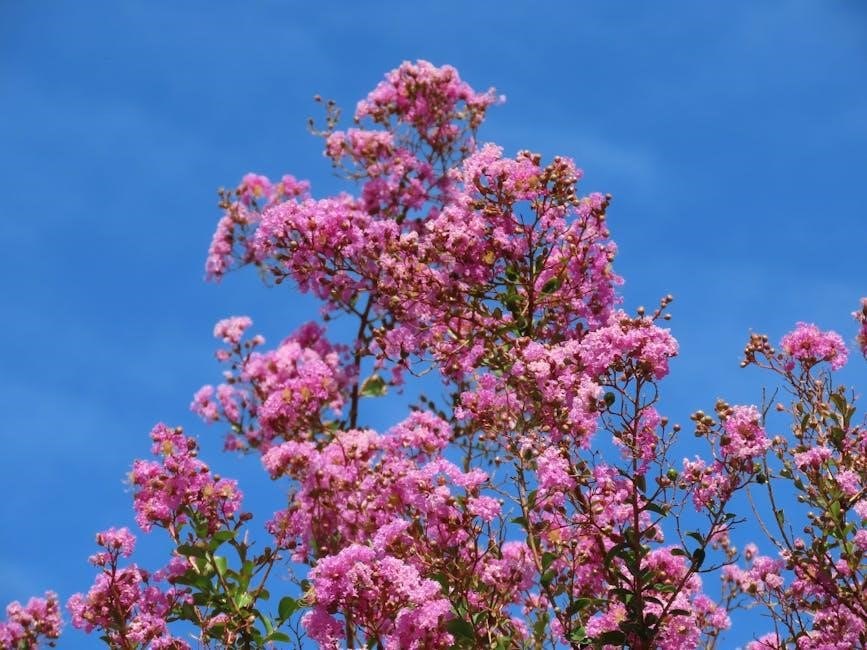
Overview of Crepe Myrtle Characteristics
Crepe myrtles are renowned for their stunning, showy flowers that bloom in shades of pink, purple, red, and white, providing vibrant summer color. These flowering trees are also admired for their attractive, exfoliating bark, which reveals smooth, mottled surfaces in hues of gray, brown, and tan. They are versatile plants that can grow as shrubs or small to medium-sized trees, typically reaching heights of 10 to 30 feet. Crepe myrtles are highly adaptable, thriving in hot, dry conditions where other plants struggle. Their ability to tolerate drought and heat makes them ideal for warm climates. Additionally, they offer brilliant fall foliage, with leaves turning shades of orange, red, and yellow before dropping. Whether grown as single-trunk trees or multi-stemmed shrubs, crepe myrtles are a popular choice for their beauty, durability, and low-maintenance requirements, making them a standout in any landscape.
Importance of Proper Planting Techniques
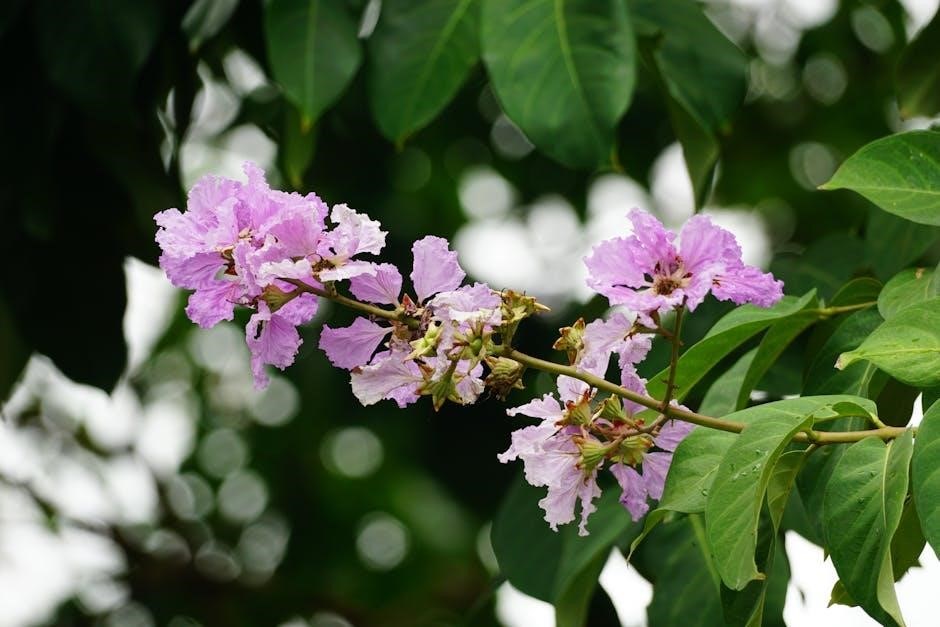
Importance of Proper Planting Techniques
Proper planting techniques are crucial for the successful establishment and long-term health of crepe myrtle trees. Ensuring the tree is planted at the correct depth and in well-prepared soil promotes healthy root development, which is essential for the tree’s ability to absorb nutrients and water. Improper planting can lead to root bound issues, stunted growth, and increased susceptibility to pests and diseases. By creating a loose soil environment around the roots, young trees can establish themselves quickly, reducing the risk of transplant shock. Additionally, proper planting techniques lay the foundation for the tree’s structure and appearance as it matures. Taking the time to plant correctly ensures your crepe myrtle will thrive, providing years of vibrant blooms and aesthetic beauty to your landscape.
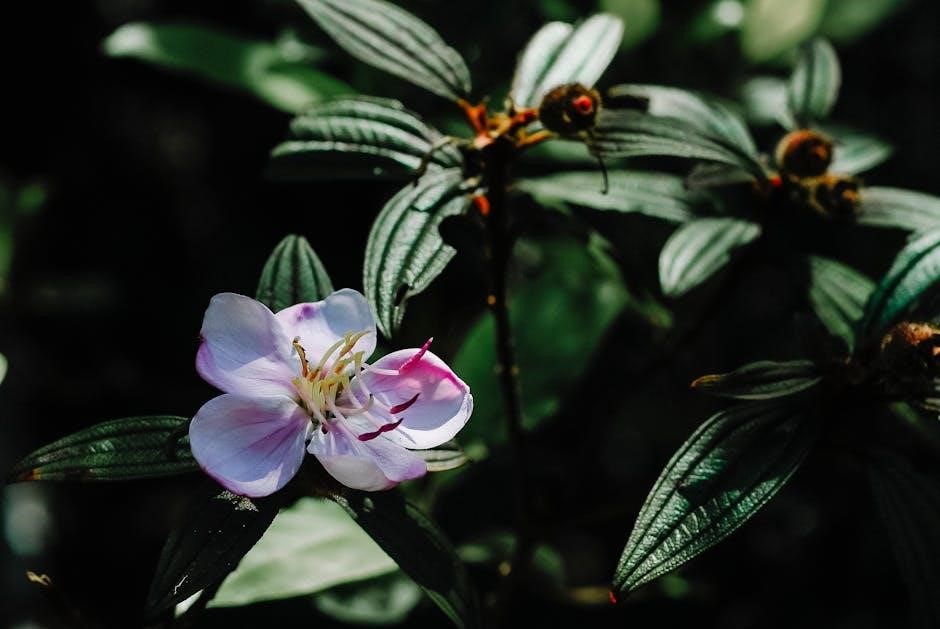
Choosing the Right Planting Location
Crape myrtles thrive in sunny, well-drained areas, making them ideal for hot, dry spots. They grow upright, requiring space for proper airflow and root development, ensuring healthy growth and abundant blooms.
Understanding Sunlight Requirements
Crape myrtles require full sun to thrive, needing at least six hours of direct sunlight daily for optimal blooming and health. They are ideal for hot, dry areas where other plants struggle. While they can tolerate partial shade, insufficient sunlight may reduce flowering and lead to weaker growth. Planting in a location with unobstructed southern exposure ensures maximum sun exposure, promoting vibrant blooms and robust development. Avoid planting near tall trees or structures that could shade the plant, as this may hinder its performance. Proper sunlight exposure is crucial for their ability to produce abundant, long-lasting flowers and maintain their attractive foliage throughout the growing season.
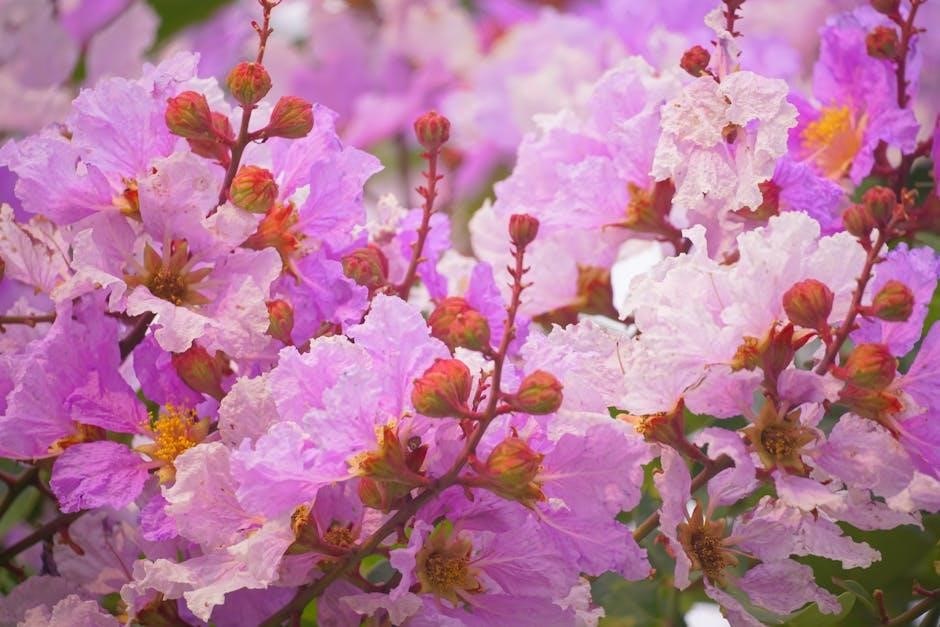
Selecting Soil Type and Preparation
Selecting Soil Type and Preparation
Crape myrtles thrive in well-draining soil with a slightly acidic to neutral pH (6.0–7.0). While they adapt to various soil types, optimal growth occurs in rich, loamy soil. Avoid planting in areas with standing water, as this can lead to root rot. To prepare the soil, loosen it to a depth of 12–18 inches to allow young roots to penetrate easily. If your soil is heavy clay or sandy, mix in organic matter like compost or well-rotted manure to improve drainage and fertility. Plant the tree at the same depth it was in the container or field, ensuring the root flare is visible. Backfill with the removed soil, gently firming it to prevent air pockets. Avoid over-tamping, as this can compact the soil and hinder root growth. Proper soil preparation ensures a strong foundation for healthy development and abundant blooming. This step is critical for establishing your crape myrtle successfully.
Best Practices for Planting Crepe Myrtles
Plant crape myrtles in late fall to early spring for optimal root establishment. Ensure proper soil preparation and spacing for healthy growth, following guidelines to avoid overcrowding and promote air circulation.

Optimal Time for Planting
The best time to plant crape myrtles is during late fall to early spring, as this allows the tree to establish its root system before the heat of summer. Planting in cooler weather reduces transplant shock and promotes healthy growth. While many gardeners purchase and plant crape myrtles in summer when they are in bloom, this can lead to increased watering needs and potential heat stress. For spring planting, ensure the ground has thawed and is workable. Avoid planting in frozen soil, as this can damage the roots. If planting in fall, choose a time when the tree is dormant to minimize stress. Proper soil preparation and timing are key to ensuring the tree thrives in its new location.
- Plant in late fall or early spring for optimal root establishment.
- Avoid planting in extreme heat or frozen soil.
- Ensure the soil is loose and well-prepared before planting.
Spacing Guidelines for Multiple Trees
When planting multiple crape myrtles, proper spacing is essential to ensure each tree has enough room to grow and receive adequate sunlight and airflow. The recommended spacing is approximately 4 to 6 feet apart if planting in rows, allowing enough space for their mature size. For larger varieties, increase the distance to 6 to 8 feet apart to prevent overcrowding. Proper spacing promotes healthy growth, reduces competition for resources, and minimizes the risk of disease spread. Avoid planting too closely, as this can lead to poor air circulation and increased susceptibility to pests. By spacing your crape myrtles correctly, you create a balanced and visually appealing landscape design.
- Space smaller varieties 4-6 feet apart.
- Larger varieties require 6-8 feet between each tree.
- Ensure adequate airflow and sunlight penetration.
- Prevent overcrowding to reduce disease risks.
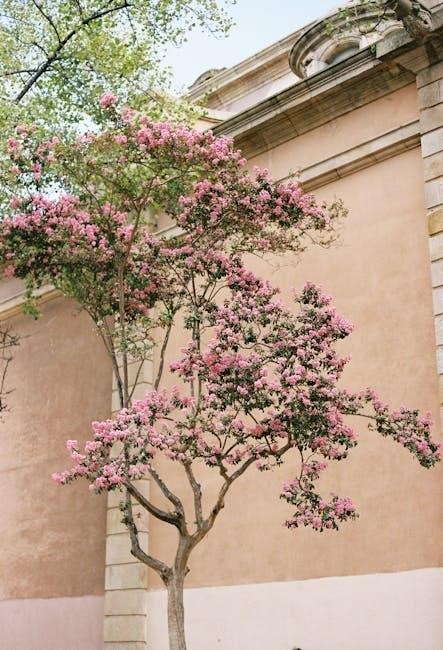
Post-Planting Care and Maintenance
Crape myrtles require consistent watering, especially during hot, dry spells. Regular pruning maintains shape and promotes blooming. Ensure proper sunlight exposure for vibrant growth and color retention.
Watering Tips for Healthy Growth
Proper watering is essential for the healthy growth of crape myrtles. Young plants require consistent moisture, especially during their first year. Water deeply once or twice a week, depending on rainfall. Established trees are drought-tolerant but benefit from occasional watering during hot, dry periods. Avoid overwatering, as it can lead to root rot and other issues. Mulching around the base helps retain soil moisture and suppress weeds. Ensure the soil drains well to prevent waterlogged roots. During extreme heat, increase watering frequency to support blooming and overall health. Regular watering encourages robust growth and vibrant summer flowers. Remember, crape myrtles thrive in well-drained soil with adequate hydration, making them ideal for warm climates.

Pruning and Trimming Techniques
Pruning and trimming are crucial for maintaining the health and aesthetics of crape myrtles. The best time to prune is during late winter or early spring, before new growth begins. Remove dead, diseased, or damaged branches to promote air circulation and healthy growth. For shaping, cut back crossing or rubbing branches, and thin out the canopy to allow sunlight to reach inner limbs. Light trimming during the growing season can help maintain shape, but avoid heavy pruning, as it can reduce flowering. Deadheading spent flowers encourages repeat blooming. Prune suckers from the base to maintain a clean appearance. When training young trees, consider whether you want a single or multiple trunk structure, as this will guide your pruning decisions. Proper pruning techniques ensure vibrant blooms, attractive bark, and a well-defined form, making crape myrtles a standout in any landscape.
